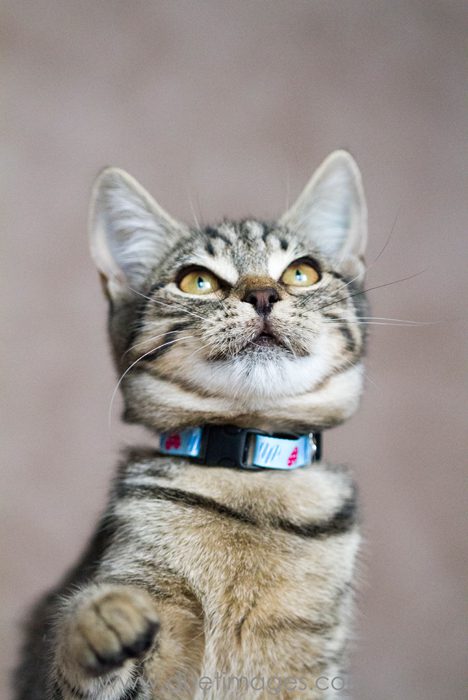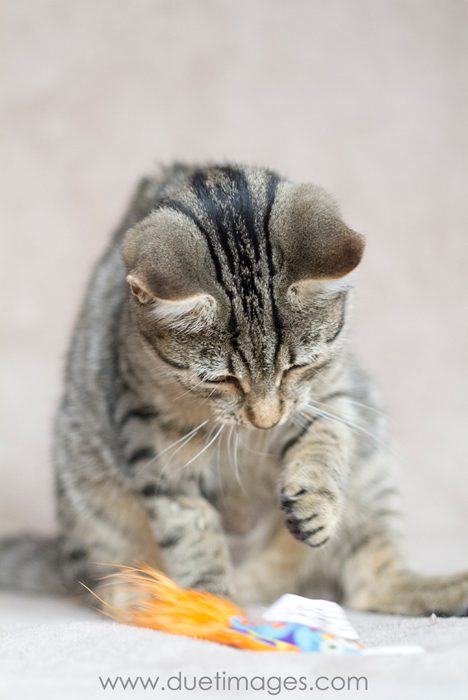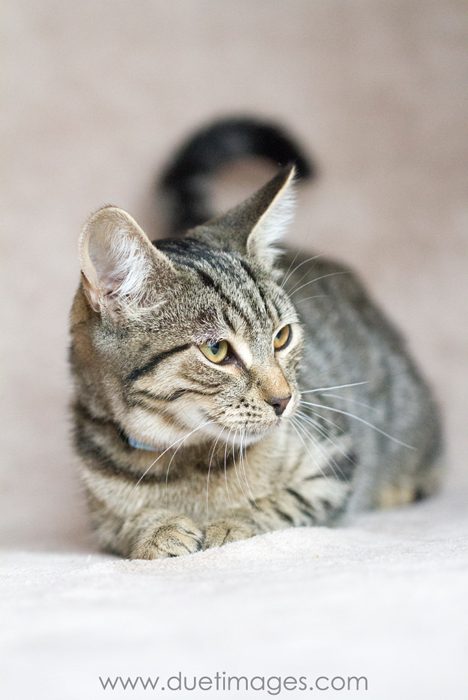Understanding Cat Sleep
I personally cannot think of any animal that sleeps more than a domestic cat – can you ? I didn’t need to research this topic to figure out that around three quarters of each 24-hour day is spent in light or deep sleep. When Melbourne’s owners and carers arrange cat photography sessions, it is not unusual for the session to begin with a snooze. The main subject may be either:
a) fast-asleep,
b) lightly dozing,
c) just waking up, or …
d) … slightly grumpy and in need of their beauty sleep!
Wild cats are usually at (or near) the top of their local food-chain. So with few natural predators, they can afford to ‘sleep-in’ whenever they feel like it! And let’s face it, when playtime comes to the domestic cat – there is much sprinting, jumping and general tom-foolery to be had. That behaviour burns a lot of calories, so any remaining energy needs to be conserved before the next meal-time is due :o)
Have you ever noticed how your dozing cat will fidget from time to time in the basket? Often opening their eyes slightly, then closing them again – and returning to that deep, slow, rhythmic breathing that indicates a quality sleep. This behaviour can be explained by recent scientific research. Apparently, the continuous duration of feline’s sleeping period is typically between ten and twenty minutes. That’s not very long is it?
It is assumed that this repetitive sleep/wake pattern allows for occasional checking for intruders in their environment. This is also why their paws are usually located just below their head. Should that regular ‘territory check’ uncover an intruder, then the cat is immediately ready to stand up and investigate further.
There are plenty of clues for when a cat moves from a light ‘doze’ to a deeper sleep. At this stage, it is not wise to wake them up – unless absolutely necessary. Their body visibly stretches out and relaxes during these periods of deep-sleep. Usually, they will roll onto their side, and quite often – start to fall into and out of dreams. Despite the old-wives tales you occasionally hear, nobody knows what Cats dream about – but dream they most certainly do! Each burst of dreaming will periodically trigger twitching of the leg and facial muscles, in response to frequent electrical pulsing in their brains and nervous systems. It must be all that chasing of slow-fat mice ;o) Ooops, where did that old-wives tale pop out from!?
One thing that scientists are clear about is that unless the phase of sleep is very deep, their senses of smell and hearing are still monitoring their local environment. Quite literally, the sound of a flapping bird-wing nearby is often all it takes to wake-up a cat from its slumber.
It is also true that kittens sleep more than adult cats, although their sleeps tend to be shorter in duration, but more frequent in occurrence. Quite literally, a young kitten can play one moment, and then fall asleep exactly where were just standing. This is even if they were standing on their litter-tray! If you sit-back and observe them for long enough – I promise that you will see this happen ;o)
Cool winter’s nights tend to encourage longer bouts of sleep, but with time – maturity will sometimes encourage your beloved feline to sleep at the same time you do. However, I definitely can’t promise this ;o)
As we all know, when cats are awake – they are very awake! Here are some examples of fully paid-up members of the wide awake club. These are from some of our most recent cat photography sessions:
If you find that your cat doesn’t let you sleep at night, then you may want to read this interesting summary of encouraging your feline to adapt to human sleep cycles through a mix of environmental and emotional actions.
Cheers, Ross
Sleep – Cat Photography Melbourne




